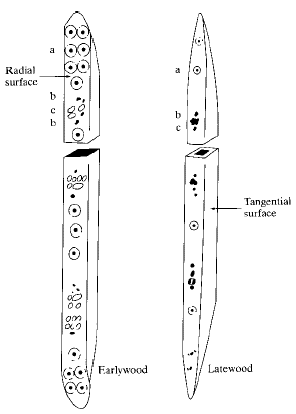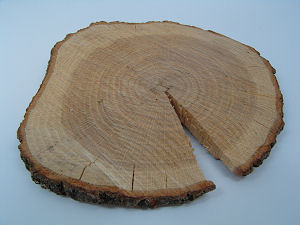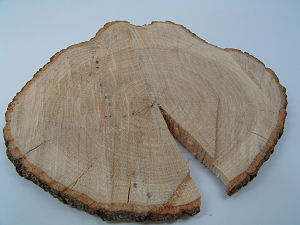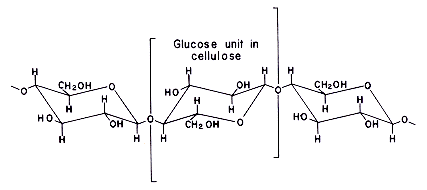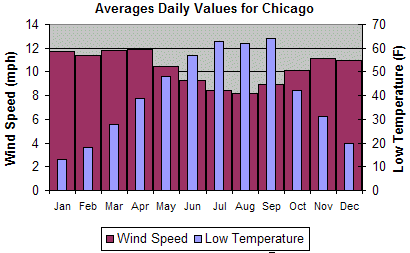Simplified structure of the cell wall showing orientation of microfibrils in each of the major wall layers
The Tree Collection @ Molecular Expressions
Jeff Thomas, 2010
Composition of cell wall of wood
Material Structure Approx. wt % Fibres Cellulose (C6H10O5)n Crystalline 45 Matrix Lignin Amorphous 20 Hemicellulose Semi-crystalline 20 Water Dissolved in the matrix 10 Extractives Dissolved in the matrix 5 from Engineering Materials 2: An Introduction to Microstructures, Processing and Design, M.F. Ashby & D.R.H. Jones, Pergamon, 1994, p. 258.
Cellulose molecule - a linear polymer of glucose units
Cellulose is the primary component of the cell wall. Furthermore, it is the single most abundant organic chemical in nature. It is one of the few natural compounds that retain the same structure regardless of whether its source is wood, cotton, grass, or a host of other plants. Structurally cellulose is the simplest of the cell wall components -- a linear polymer of glucose units. Biosynthetic polymerization is such that the basic polymeric unit of two combined glucose constituents is "stretched" to almost its maximum dimension. The number of glucose units in a cellulose molecule (degree of polymerization) ranges from a few to as many as 15,000, depending on its location within the cell wall.
from Mechanics of Wood and Wood Composites, J. Bodig & B.A. Jayne, Krieger Publishing, 1993, p. 5.
Properties of some fibers and matrices
Materials Density Modulus Strength ρ (Mg m-3) E (GPa) σf (MPa) Fibers Carbon, Type 1 1.95 390 2200 Carbon, Type 2 1.75 250 2700 Cellulose fibers 1.61 60 1200 Glass (E-glass) 2.56 76 1400-2500 Kevlar 1.45 125 2760 Matrices Epoxies 1.2-1.4 2.1-5.5 40-85 Polyesters 1.1-1.4 1.3-4.5 45-85
Description of wood 8
|
|
from Mechanics of Wood and Wood
Composites, J. Bodig & B.A. Jayne, Krieger Publishing, 1993, pp. vii, 5, 291, 297, 299, 305. |
| Softwood | Hardwood |
|
|
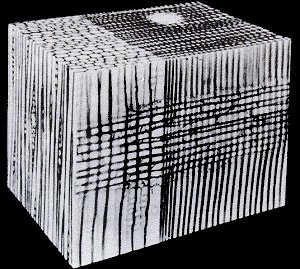 |
 |
| Yellow Pine | |
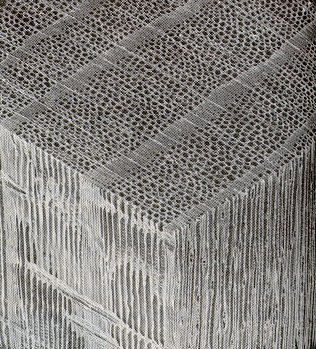 |
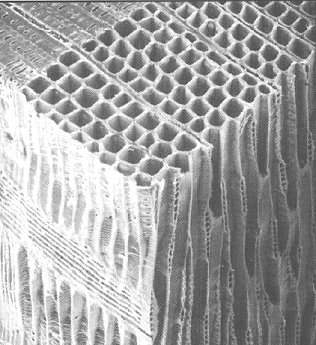 |
| Koch,
P. 1972a. Utilization of the southern pines. I. The raw material. USDA
Forest Service Agricultural Handbook No. 420. 733 pp. Koch, P. 1972b. Utilization of the southern pines. II. The raw material. USDA Forest Service Agricultural Handbook No. 420. 926 pp. |
|
|
White Ash |
|
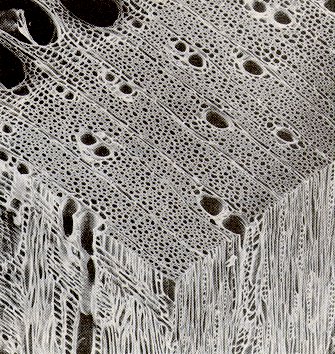 |
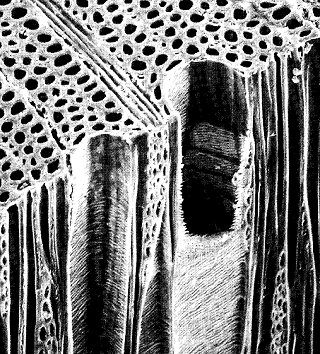 |
|
White Oak |
|
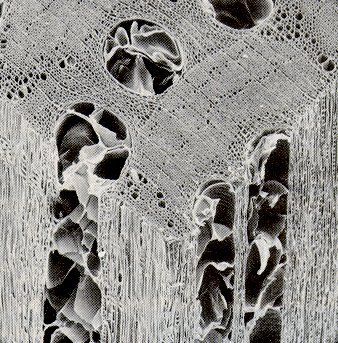 |
|
